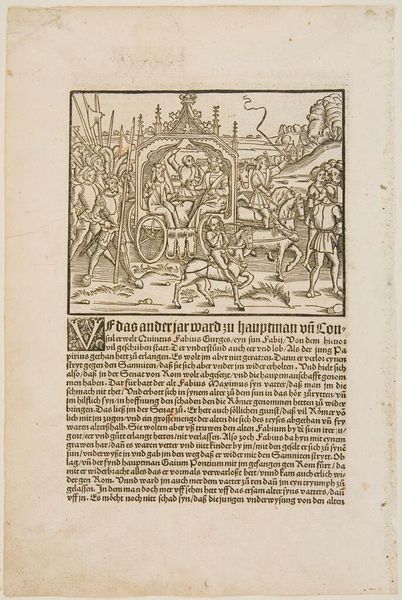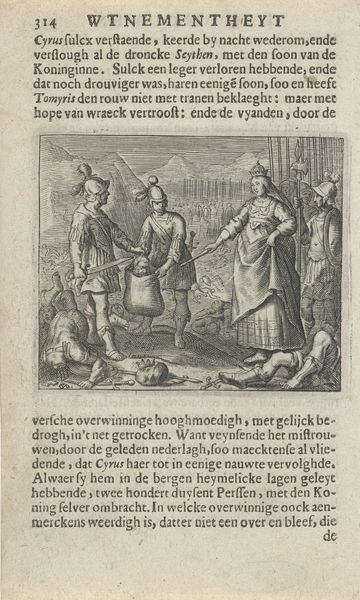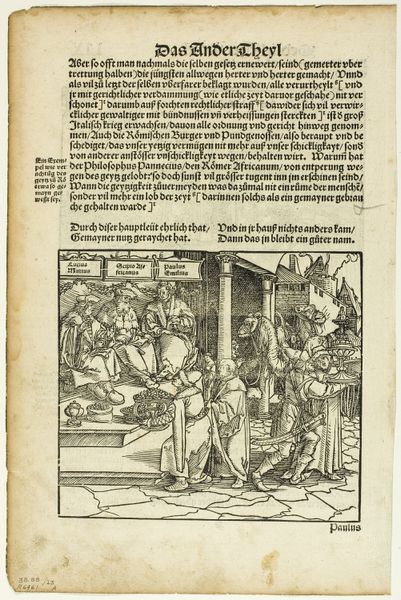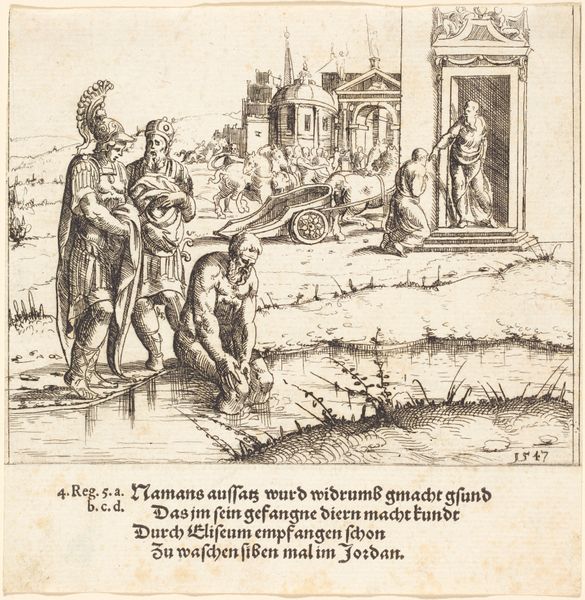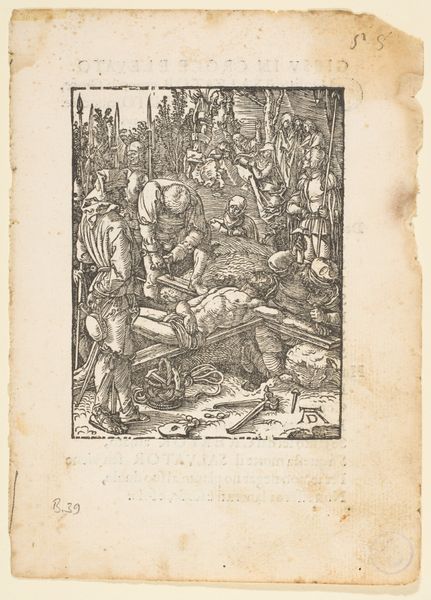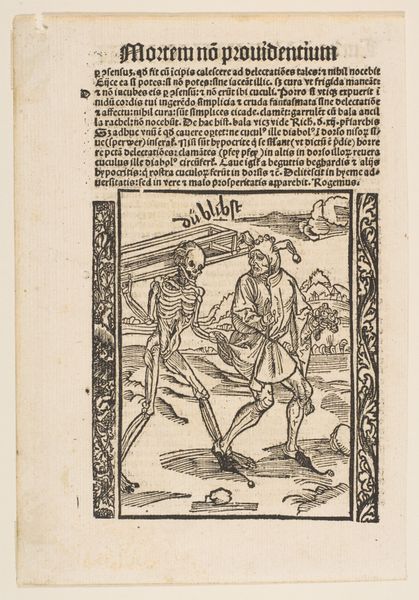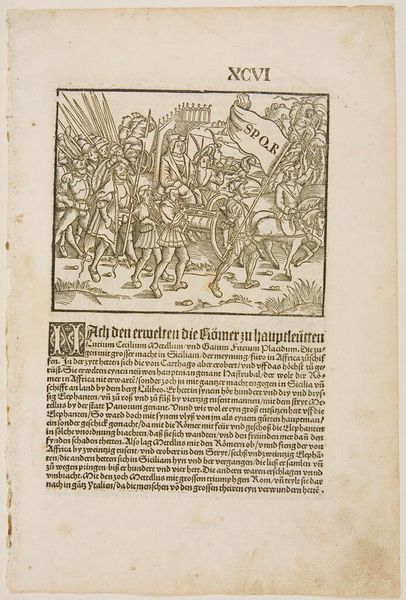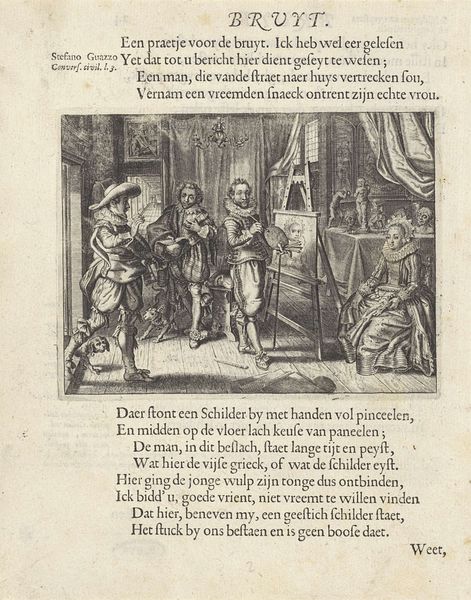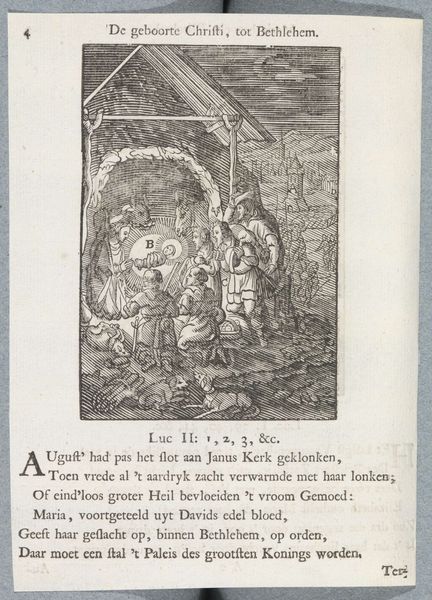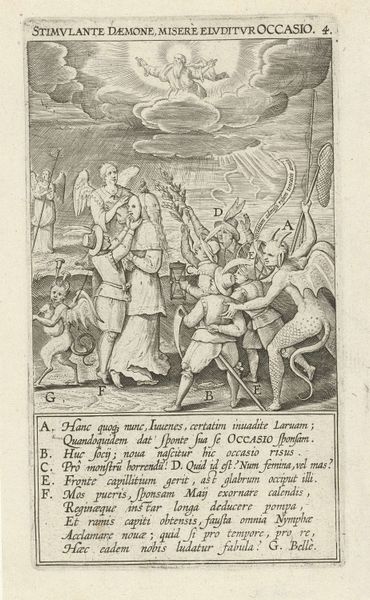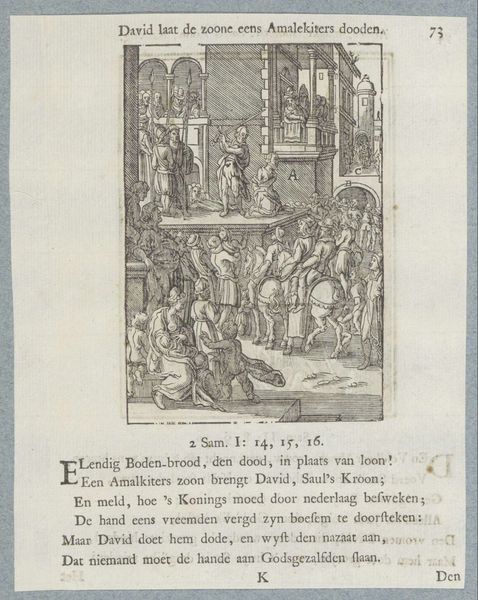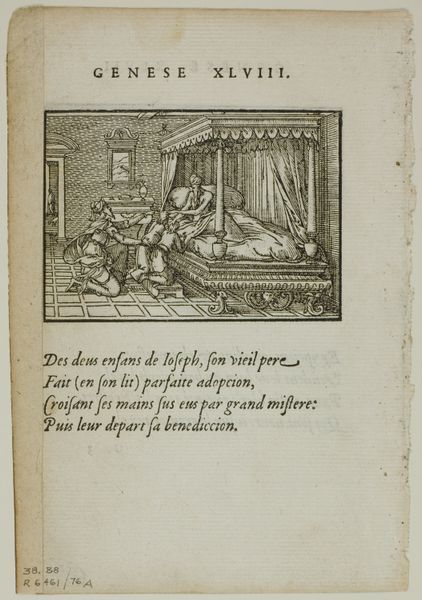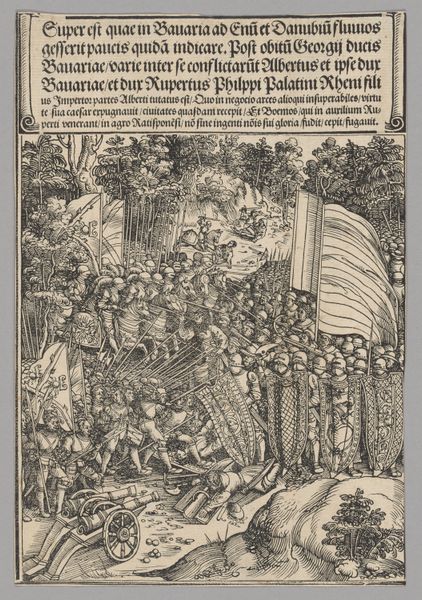
The Rain of Manna from Biblische Historien Künstlich fürgemalt, plate five from Woodcuts from Books of the XVI Century c. 1551 - 1937
0:00
0:00
drawing, print, paper, woodblock-print, woodcut
#
drawing
#
narrative-art
# print
#
figuration
#
paper
#
woodblock-print
#
woodcut
#
history-painting
#
northern-renaissance
Dimensions: 53 × 71 mm (image, recto); 85 × 72 mm (image/te×t, recto); 62 × 70 mm (image, verso); 104 × 71 mm (image/te×t, verso); 143 × 99 mm (sheet)
Copyright: Public Domain
Sebald Beham created this woodcut, “The Rain of Manna,” around 1530, part of a series illustrating biblical stories. The image is made by carving into a block of wood, then inking and printing it – a relatively accessible technology at the time. What I find compelling is the relationship between the printmaking process and the image itself. Look closely, and you see that Beham wasn't trying to mimic painting. Instead, he embraced the stark contrast and repetitive lines inherent to the medium. The falling manna is depicted as a shower of identical droplets, mirroring the way the printing press itself produces multiples. This connects the divine miracle of provision with the emerging power of the printing press to disseminate information and, potentially, challenge existing social hierarchies. The labor involved in creating this print – the carving, inking, and pressing – also speaks to a wider context of craft and production in the 16th century. Beham was both an artist and an artisan, his work reflecting the shifting landscape of a society grappling with new technologies and economic models.
Comments
No comments
Be the first to comment and join the conversation on the ultimate creative platform.
